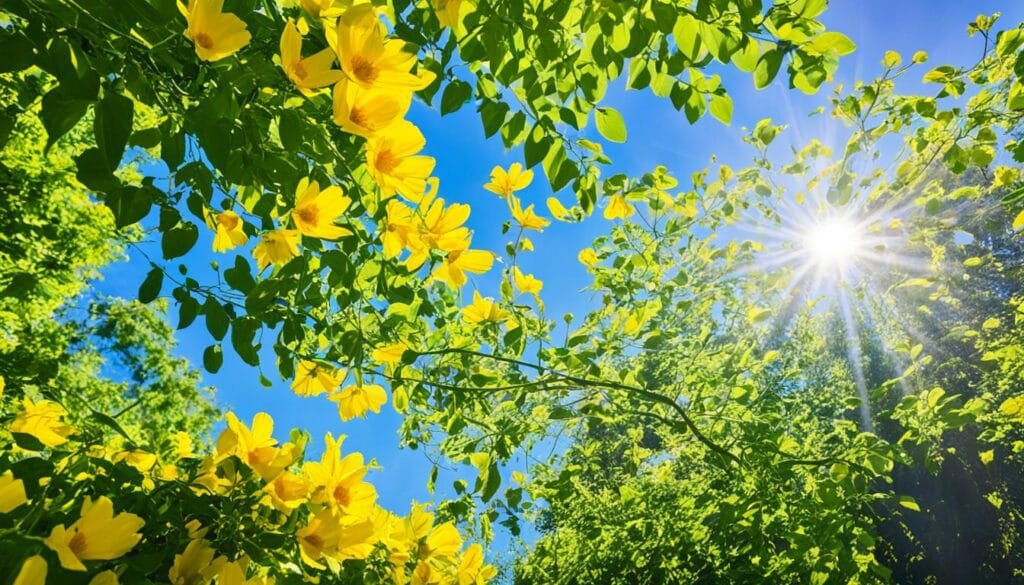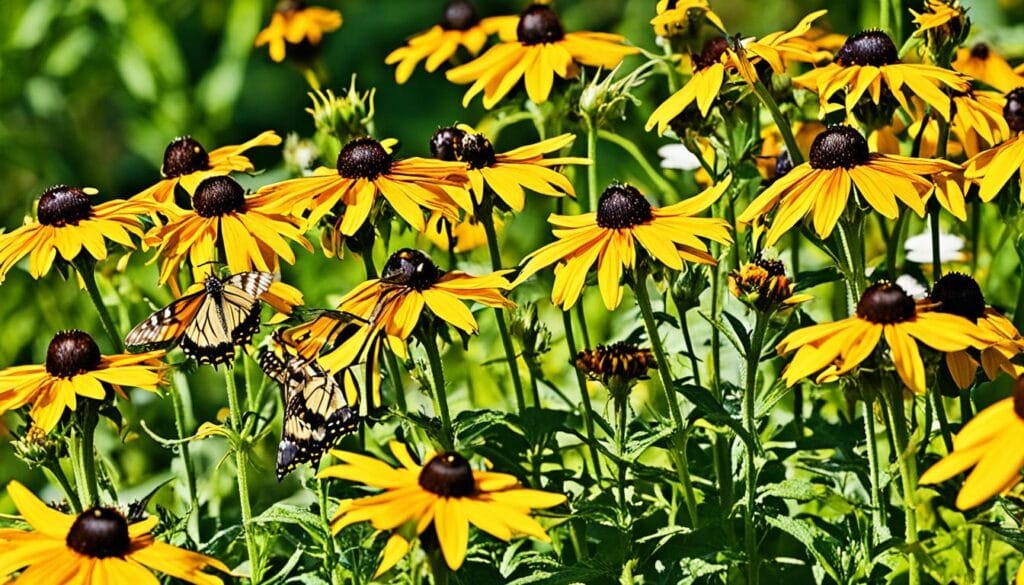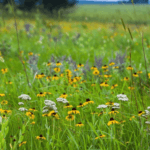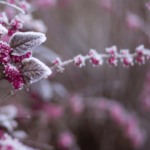
Beautiful flowers gardenia Plants For Your homes

Black-eyed Susans, known as Rudbeckia hirta, are loved wildflowers from North America. They are perennials known for their bright yellow petals and a unique black center. Knowing when they bloom is key for gardeners who want to enjoy their beauty.
Black eyed susans bloom from July to the first frosts, adding color to summer. Some types, like ‘Early Bird Gold’, start blooming in spring. In some places, they bloom twice a year, in summer and fall.
Their best bloom time is in July and August. During this, Rudbeckia hirta plants show off many flowers. Each bloom has bright, yellow-gold petals and a dark center. This look is why they’re so popular with gardeners and bees.
Black Eyed Susans, known as Rudbeckia hirta, are loved for their bright colors in gardens. These prairie plants attract many insects and birds. They are easy to grow and make beautiful cut flowers.
Black Eyed Susans are from North America and Canada, with about 30 species. Rudbeckia hirta grows in all 50 states and thrives in many places. They can grow in USDA Zones 3 to 11, making them adaptable to many climates.
| Variety | Hardiness Zone |
|---|---|
| Rudbeckia hirta | Zones 3-11 |
| Rudbeckia fulgida var. sullivantii | Zones 4-9 |
| Rudbeckia triloba | Zones 4-7 |
Black Eyed Susans stand out with their bright yellow or gold petals and dark brown center. They can be 1 to 3 feet tall, with some reaching up to 5 feet. Their leaves are long and lance-shaped, and the flower stalks can be over 8 inches long.
The daisy-like flowers are 2 to 3 inches wide, making them a big part of any garden. The Gloriosa Daisy, a Rudbeckia hirta hybrid, has blooms up to 6 inches wide in pure yellow or mixed colors.
The Gloriosa Daisy, a hybrid of Rudbeckia hirta, boasts impressive blooms that can reach up to 6 inches across, showcasing pure yellow or bicolored petals.
There are many varieties of Black Eyed Susans, each with its own look:
Planting Black Eyed Susans in your garden will bring beauty and attract pollinators. Their long-lasting flowers are perfect for bouquets and arrangements.
https://www.youtube.com/watch?v=71QjVVzzyqg
Black eyed Susans are loved summer wildflowers and native American plants. They bloom for a long time, longer than many other flowers. They start in early to mid-summer and keep gardens bright with their yellow petals and dark centers until frost.
The peak bloom time is in July and August. But, some types like ‘Early Bird Gold’ may bloom as early as spring. Some varieties even bloom again in the fall, making the garden colorful longer.
Black eyed Susans are tough and bloom well with little care or deadheading. They will flower every year, bringing sunshine to any garden or meadow.
| Bloom Period | Duration |
|---|---|
| Early to Mid-Summer | July through August |
| Fall Rebloom (Some Varieties) | September through First Frost |
Black eyed Susans are easy to care for, but some things can affect when they bloom. To keep them flowering longer, consider these tips:
With the right care and conditions, gardeners can enjoy black eyed Susans from early summer until the first frost. These native plants are not only tough but also bring natural beauty to any garden or landscape.
Black-eyed Susans (Rudbeckia spp.) come in many types, each with its own bloom time, color, and growth. These native flowers bring bright yellow daisy flowers to gardens, drawing in pollinators and adding beauty. Knowing the differences between annual and perennial types, and the traits of popular varieties, helps gardeners plan for a steady show of these lovely flowers.
Black-eyed Susans are found in both annual and perennial forms. The most common annual type is Rudbeckia hirta, often treated as an annual in gardens. It spreads easily, ensuring a yearly return of bright yellow flowers. Annuals are known for their many blooms and adapt well to different conditions.
Perennial black-eyed Susans, like Rudbeckia fulgida and Rudbeckia subtomentosa, come back year after year. They grow deep roots and spread out, offering a steady supply of blooms. These perennials handle various soils well and are great for naturalized areas or mixed borders.
Black-eyed Susan varieties have different bloom times, heights, and colors. Some top picks include:
| Cultivar | Bloom Time | Height | Annual/Perennial |
|---|---|---|---|
| Rudbeckia ‘Goldsturm’ | Mid-summer to fall | 2-3 feet | Perennial |
| Rudbeckia hirta ‘Indian Summer’ | Mid-summer to fall | 3-4 feet | Annual |
| Rudbeckia ‘Prairie Sun’ | Mid-summer to fall | 3 feet | Annual |
| Rudbeckia subtomentosa ‘Henry Eilers’ | July to September | 3-5 feet | Perennial |
By picking a mix of annual and perennial black-eyed Susans with different bloom times, gardeners can have a steady flow of these bright flowers all season. Whether planted in large groups or with other flowers, black-eyed Susans bring a splash of golden yellow to any garden.

Black-eyed Susans, also known as Rudbeckia or yellow daisies, brighten up any garden with their vibrant colors. They come in over 24 native species across North America, offering colors from bright yellow to deep red. To make sure they bloom well, plant them at the right time and give them the best growing conditions.
For great results, plant Black-eyed Susans in summer or early fall. They are hardy perennials in zones 4 through 9, fitting many climates. If starting from seed, plant them about 6 weeks before the last frost in your area. Wait for soil to warm up to 70°F to 75°F for germination.
Black-eyed Susans like soil that drains well and is rich in nutrients. They do well in full sun, which helps them bloom reliably. While they can take some shade, it might reduce their blooms. Pick a spot that gets at least 6 hours of direct sunlight a day. Adding them to a vibrant garden with other sun-loving plants is a great idea.
Give your Black-eyed Susans about 18 inches of space to grow. This helps prevent disease and pests. When planting, dig a hole a bit bigger than the plant’s root ball. Place the plant at the same depth as before, then fill the hole with soil and water well to help it settle.
| Planting Aspect | Recommendation |
|---|---|
| Planting Time | Summer or early fall |
| Soil Temperature for Seed Germination | 70°F to 75°F |
| Plant Spacing | 18 inches apart |
| Sun Exposure | Full sun (at least 6 hours daily) |
Follow these tips to help your Black-eyed Susans grow and bloom well. These plants are easy to care for and can handle drought. They’re perfect for both new and experienced gardeners who want to brighten their gardens with yellow flowers.

Black-eyed Susans, also known as Rudbeckia, are cheerful wildflowers that brighten up any garden. They are hardy plants native to North America, thriving in zones 3 to 9. With the right care, these summer flowers can make your garden look stunning for months.
Once they’re set, black-eyed Susans can handle drought but need regular watering in their first year. Check the soil often and water deeply when it’s dry on top. Don’t water the leaves to avoid diseases. They usually don’t need fertilizer, fitting well with many soil types.
| Watering Frequency | Soil Moisture | Fertilizer Requirements |
|---|---|---|
| Weekly during first season | Keep soil evenly moist | Not typically needed |
| Reduce watering once established | Allow top inch to dry between watering | Apply balanced fertilizer if soil is poor |
Deadheading is key for healthy growth and longer blooms on black-eyed Susans. Cut the stem to just above the first leaves when deadheading. This encourages more flowers and keeps the garden neat.
Prune them to 2 inches above ground at season’s end. This protects the plant in winter. Add mulch around the base to keep roots warm and safe from frost.
“Regular deadheading and pruning not only keeps black-eyed Susans looking their best but also promotes vigorous growth and prolongs the blooming season, ensuring a beautiful display of these cheerful wildflowers throughout the summer.”
By following these simple tips, gardeners can enjoy black-eyed Susans for many years. These plants are perfect for adding color to borders, meadows, and wildflower gardens. They’re a top pick for any garden lover.

Black-eyed Susans are not just beautiful; they also help pollinators a lot. As a native plant of the prairie, they draw in many butterflies, bees, and birds. This makes them a key plant for any garden that wants to help pollinators.
The Black-eyed Susan’s flower head has 250 to 500 small flowers. Each one is a shallow nectar cup for pollinators. The dark center, with its ultraviolet pigment, guides bees to the nectar.
Black-eyed Susans draw in many pollinators. The Metallic Green Bee and Scolid Wasps, for example, love these flowers. They use the flowers to gather pollen and nectar.
| Pollinator | Attraction to Black-eyed Susans |
|---|---|
| Butterflies | Nectar-rich flowers; landing pad for feeding |
| Bees | Ultraviolet pigment in the center; shallow nectar cups |
| Birds | Dried seeds as a food source; plant stubs for protection |
Black-eyed Susans help wildlife all year, not just when they’re blooming. Birds use the plant stubs for shelter and eat the dried seeds. This makes them a great resource for pollinators and birds all year.
As a cut flower, Black-eyed Susans are bright and last a long time. They bloom for a while and can grow on their own, so you always have flowers. This makes them perfect for gardens and people who love cut flowers.
Black-eyed Susans are loved for their bright yellow flowers. They are perfect for gardeners who want flowers that last all summer. With the right care, these plants can bloom for a long time. Here are some tips to make your Black-eyed Susans bloom longer and come back year after year.
To make your Black-eyed Susans bloom longer, keep these tips in mind:
Removing dead flowers, or deadheading, helps the plant make more flowers. It also keeps your garden looking neat. This stops the plants from spreading too much, which can be a problem.
There are ways to make Black-eyed Susans bloom again later in the season:
Using these methods, you can enjoy the beauty of Black-eyed Susans for longer. Your garden will be full of these lovely flowers. Plus, you’ll attract pollinators and other helpful insects.
The main types of Rudbeckia bloom for about a month or more. This is a long time for a perennial plant.
With the right care, your Black-eyed Susans will give you a garden full of golden flowers. They will brighten your garden from summer into fall.
Black Eyed Susans are a great choice for any garden. They have bright yellow petals and dark centers. These native perennials bloom from June to October, making them perfect for sunny spots.
They are easy to care for and support local ecosystems. Gardeners love them for their beauty and low upkeep.
Pair Black Eyed Susans with other native plants and grasses for a beautiful garden. Great companions include:
These plants together create a mix of colors and textures. The golden yellow of Black Eyed Susans goes well with purples, blues, and greens. This mix attracts many pollinators.
Black Eyed Susans are very versatile. Here are some ideas for your garden:
Adding Black Eyed Susans to your garden makes it beautiful and supports local ecosystems. They spread over time, creating a self-sustaining garden. This garden will have color and interest all season long.
Black Eyed Susans are the essence of summer, bringing sunshine to gardens and landscapes. These flowers attract pollinators and are perfect for pollinator gardens. They also make great cut flowers and can be dried for crafts.
To keep Black Eyed Susans beautiful indoors, cut them just before they open fully. This way, they’ll keep opening and last longer. Choose stems with healthy leaves and no damage or disease.
For a beautiful centerpiece, use the big blooms as the main attraction. Add smaller flowers or greenery for contrast. Change the water daily and remove dead flowers to keep your arrangement fresh. With the right care, your Black Eyed Susans can brighten your space for 8 to 10 days.
Black Eyed Susans are great as dried flowers for crafts and decor. Wait until the seed heads are brown and dry before drying. Hang the stems with seed heads in a cool, dry place for weeks until they’re completely dry.
Once dry, you can use the flowers in many ways:
You can also use dried Black Eyed Susans to harvest seeds for next season. Remove the dried seed heads and crush them to release the seeds. Store the seeds in a cool, dry place until you’re ready to plant them.
| Flower Part | Harvesting Time | Uses |
|---|---|---|
| Fresh Blooms | Just before buds completely open | Cut flower arrangements, centerpieces, accent flowers |
| Dried Seed Heads | 3-4 weeks after blooming, when brown and dry | Wreaths, dried arrangements, crafts, decor, seed harvesting |
Harvesting and using Black Eyed Susan flowers lets you enjoy their beauty long after they bloom. Whether fresh or dried, these flowers add natural beauty to your home and projects.
Black-eyed Susans are a great choice for any garden. They bloom from mid-summer to early fall. These flowers have bright yellow petals and dark centers, growing up to three feet tall. They attract birds, bees, and butterflies.
They are also pest-resistant and can handle drought well. Plus, they need little care, making them perfect for all gardeners. With many varieties like Goldsturm, Prairie Sun, and Irish Eyes, there’s a black-eyed Susan for every garden.
Plant them 12–18 inches apart for a beautiful display all summer. This way, your garden will be full of life and color.
For the best growth, give them well-draining soil and full sun. Water them when it’s dry. Cutting off dead flowers makes them bloom more. Pruning in late fall keeps them looking great.
Adding black-eyed Susans to your garden makes it vibrant and friendly for wildlife. It’s a low-care way to enjoy a colorful garden all season.




